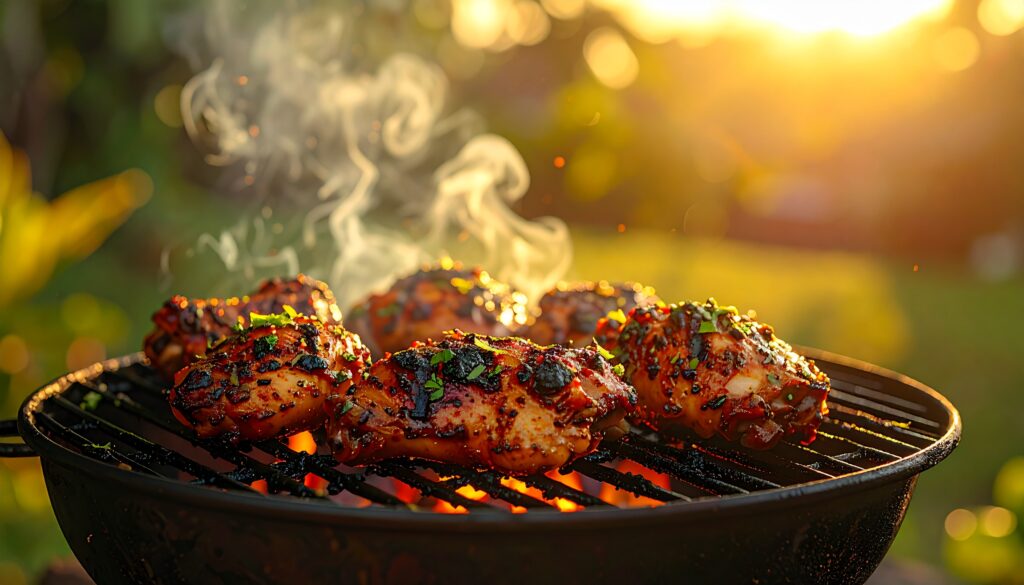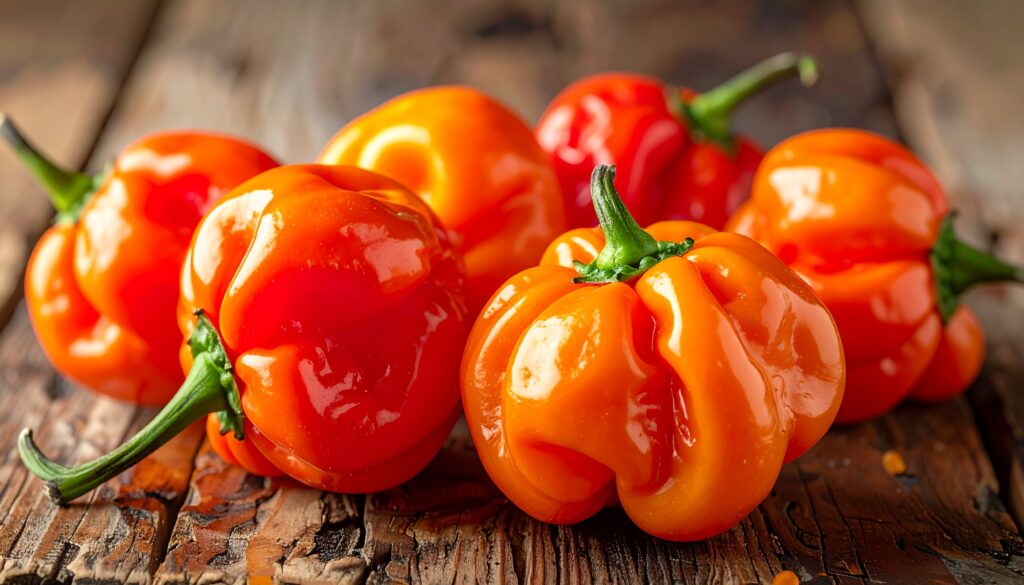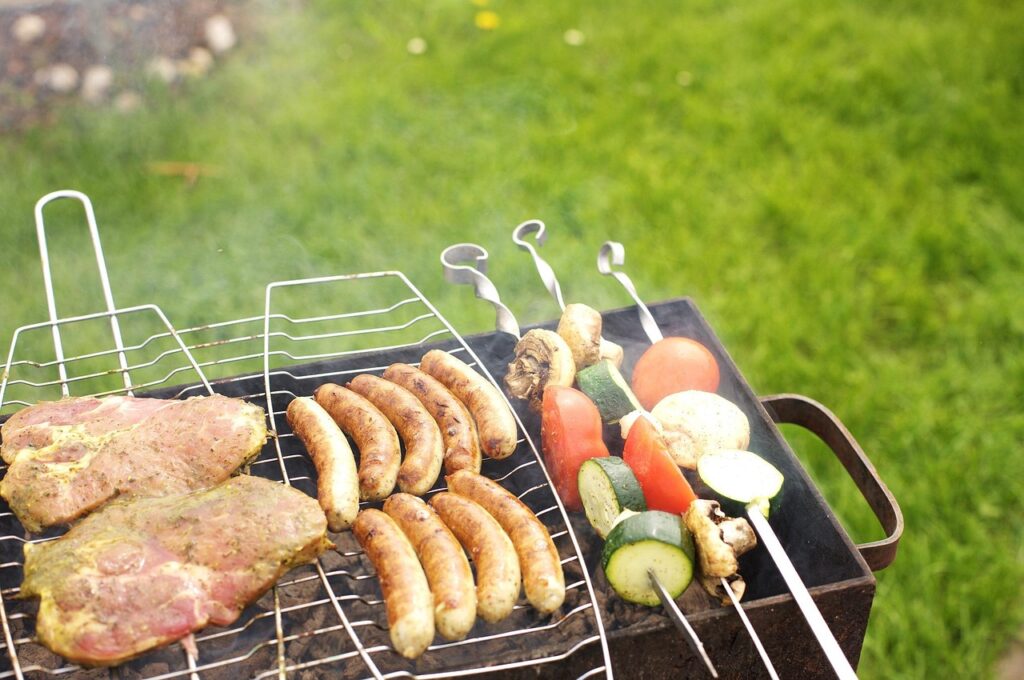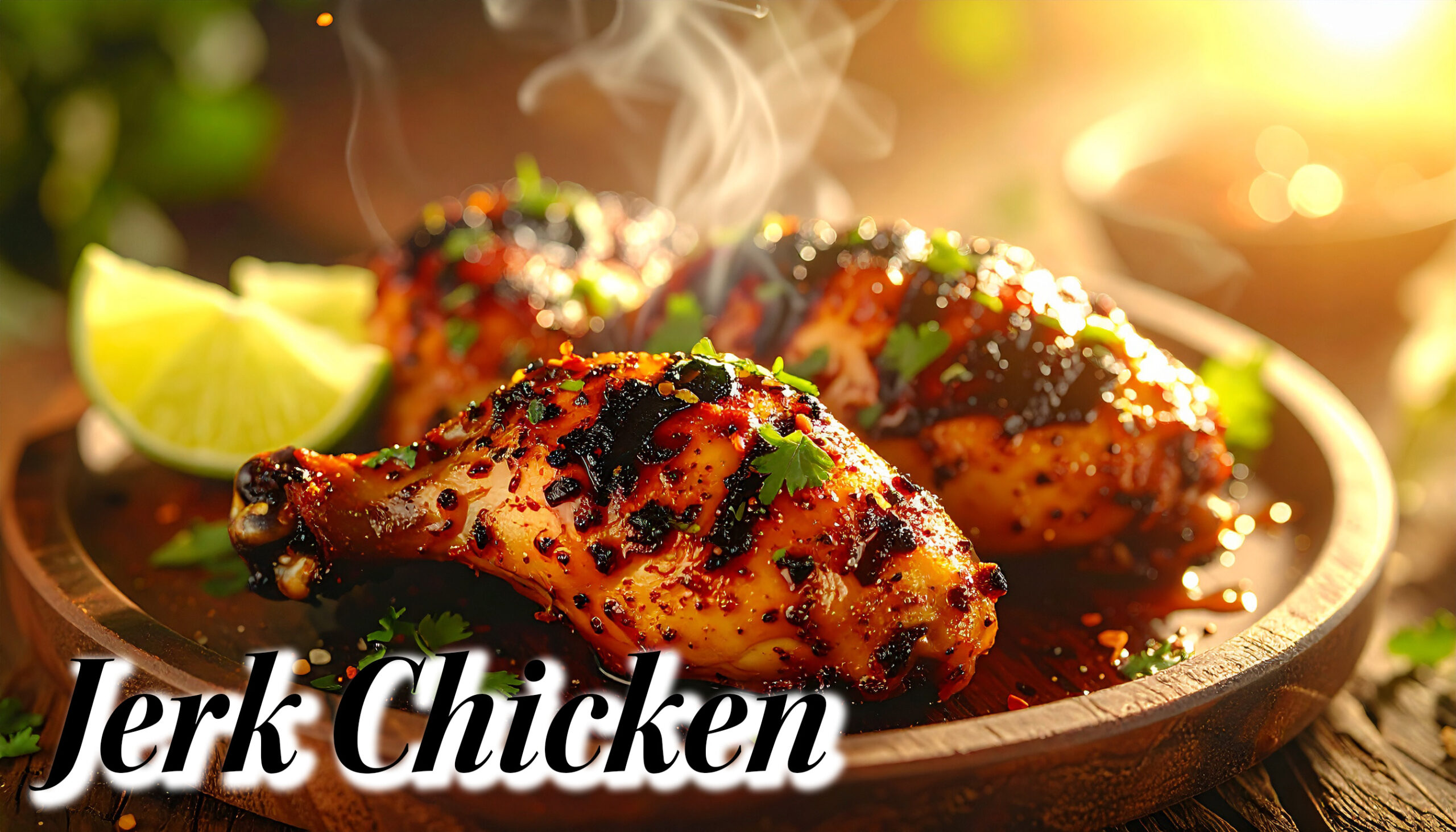Have you ever tried Jerkchicken?
Originating in Jamaica in the Caribbean, this dish captivates with its savory and juicy flavor!
This time, we'll introduce Jerkchicken, a beloved dish that symbolizes Jamaican culture!
Please watch until the very end!
Additionally, TasteTune introduces cuisines from around the world and streams music that expresses those dishes♪
Available on YouTube, Spotify, and other platforms, so enjoy it along with this article!
What is Jerkchicken?

Jerkchicken is a spicy grilled chicken dish originating from Jamaica, a Caribbean nation.
It is beloved worldwide as a popular “Caribbean soul food.”
“Jerk” refers to a cooking method where meat is seasoned with spices and then grilled.
This cooking method is used not only for chicken but also for pork, fish, and vegetables.
Jerkchicken is slowly grilled over charcoal, resulting in a crispy exterior and a juicy interior.
The flavor of that Jerkchicken is smoky and spicy, with an outstanding sweetness from the herbs.
First is the smokiness from charcoal grills and drum can grills.
The surface is crispy and charred, yet the inside is juicy, delivering that satisfying barbecue flavor.
Next, spiciness.
The distinctive Jamaican Scotch Bonnet pepper gives it a fiery, intense heat and a fruity aroma.
Furthermore, herbs and spices create a sweet and warm aroma.
Allspice, in particular, has a complex aroma reminiscent of cinnamon, cloves, and nutmeg combined, making it the very soul of Jerkchicken.
Finally, there's a clean, sharp acidity from lime or vinegar.
The spices carry a refreshing acidity that cuts through the richness of the meat, resulting in a light, tropical finish.
The History of Jerkchicken

The origins of jerk cooking date back to the era of the Caribbean's indigenous peoples.
The techniques of drying and smoking meat and using aromatic woods for cooking already existed at that time.
It is said to have originated through the fusion of techniques brought by Maroons (escaped slaves) who were active in Jamaica from the 17th century onward.
The Maroons lived armed in the mountains, hunting wild boars and other game for their livelihood.
There, they used spices and smoke treatment for long-term preservation, pest control, and flavoring.
This became the prototype for the current “jerk flavor,” eventually establishing itself in the region as Maroon cuisine.
The characteristic seasoning of jerk centers on allspice and Scotch bonnet peppers, combined with thyme, garlic, onion, lime, vinegar, and occasionally sweetness.
These were formed by blending spices available on the island with African, indigenous, and European culinary traditions.
During the first half to mid-20th century, jerk cuisine spread and became commercialized alongside the growth of tourism and urbanization.
Jerk stalls and jerk centers proliferated, and from around the 1930s, their exposure to tourists also increased.
It is also recorded that it spread throughout the world alongside immigrants.
In recent years, jerk seasoning has been bottled and chain stores have proliferated, making it a global cuisine.
Fun Facts and Interesting Stories About Jerkchicken
The Scotch Bonnet is among the world's hottest peppers.

The Scotch Bonnet pepper, which is key to Jerkchicken's spiciness, is a chili pepper of the same family as the habanero.
The Scoville scale (a unit of heat) ranges from 100,000 to 350,000 SHU, which is said to be about 30 times hotter than regular Tabasco sauce.
However, it's not just spicy—it's characterized by a fruity, tropical aroma.
For this reason, it is considered difficult to replicate with other chili peppers.
Allspice is Jamaica's treasure
The central spice in jerk, allspice (pimento), is actually produced in the largest quantities in the world by Jamaica.
The name “allspice” comes from its aroma, which is reminiscent of a blend of cinnamon, cloves, and nutmeg.
Locally, wood is also used as fuel, and cooking over “pimento wood” is considered proof of authenticity.
The charcoal drum grill is a symbol of Jamaica.

At Jamaican food stalls, grilling over makeshift grills fashioned from halved oil drums is the standard practice.
This “drum grill” became popular during the postwar era of material shortages, featuring a design that traps smoke to enhance flavor.
Locally, the smoke-filled street food stalls are known as the “Avenue of Appetizing Aromas.”
Additionally, the smoke from the drums is sometimes referred to as “the national fragrance of Jamaica.”
Reggae and jerk share the same rhythm.
In Jamaica, reggae music and Jerkchicken go hand in hand.
Grilling smoked chicken at a food stall while playing Bob Marley has become a classic sight.
Bob Marley's lyrics also feature words like “Jamaican spice” and “smoke,” suggesting that music and food share the same cultural pulse.
There are other types of jerk besides chicken.
Actually, some of you may have already guessed, but “jerk” refers to a cooking method, not a specific type of meat.
For example,
- Jerk Pork:This is the original version.
- Jerkfish:Popular seafood restaurant by the sea.
- Jerk Tofu:Vegetarian-friendly version.
Such variations exist.
How to Make Jerkchicken (Japanese-Style Adaptation)
Ingredients (serves 2-3)
Chicken thigh meat (bone-in or boneless)… approximately 500g
Onion... 1/2
Garlic... 2 cloves
Ginger… 1 piece
Green onions (or leeks)… 2 stalks
Lime juice (or lemon juice)… 1 tablespoon
Soy sauce... 1 tablespoon
Salad oil (or olive oil)... 1 tablespoon
Sugar (preferably brown sugar)... 1 teaspoon
Salt… 1 teaspoon
Black pepper... 1/2 teaspoon
Allspice (or substitute with cinnamon + nutmeg + cloves in a 1:1:1 ratio if unavailable)... 1 teaspoon
Dried thyme... 1 teaspoon
Chili pepper (adjust to taste)... 1/2 to 1 teaspoon
(Optional) Paprika powder... 1 teaspoon
(Optional) Honey... 1 teaspoon (if you want a milder flavor)
How to make them
- Make the marinade
Finely chop the onion, garlic, ginger, and green onion, or blend them into a paste using a food processor.
Add the lime juice, soy sauce, oil, sugar, and spices to the mixture and stir well. - Marinate the chicken
Pierce the surface of the chicken several times with a fork, then coat it thoroughly in the marinade.
Let it rest in the refrigerator for **at least 2 hours (ideally overnight)**. - Bake (or grill)
Cook using your preferred method: frying pan, fish grill, oven, charcoal grill, etc.
Cook thoroughly over medium heat until the surface is nicely browned.
(For oven: 200°C for about 25–30 minutes) - Finishing
Once baked, squeezing a little lime juice over the top will enhance the flavor.
Enjoy with rice (such as rice and peas) or salad.
Tips and Variations
- For frying pans:Start by searing the skin side, then cover halfway through to cook through the center for a moist finish.
- Spice Level Adjustment:Reduce the chili and add paprika powder instead for a richer aroma.
- Reusing Marinade:Heating allows reuse as a sauce (must be cooked through once).
Serving Suggestions
- Rice & Peace (bean rice cooked in coconut milk) pairs perfectly with it.
- You can also make it into a Jerkchicken wrap by sandwiching it in a tortilla or naan.
- Also recommended as the main dish for barbecues.
Summary
How did you like it?
This time, we introduced Jerkchicken, a beloved dish in Jamaica.
In addition to chicken, there were variations such as pork and fish.
It was a dish with deep cultural roots, and that aspect made it truly appealing!
Now, regarding restaurants in Japan where you can eat this Jerkchicken, it seems they exist all over the place!
Starting with restaurants serving Jamaican cuisine, it was even available at that gyudon chain Matsuya in the past!
You can enjoy flavors closer to the authentic taste at our restaurant.
As always, I've also shared the recipe.
Some spices and other ingredients may be somewhat difficult to obtain.
When that happens, please give it a try by referring to alternatives and other options!
Thank you for watching until the very end!
I hope this article inspires as many people as possible to take an interest in this dish.


Comments